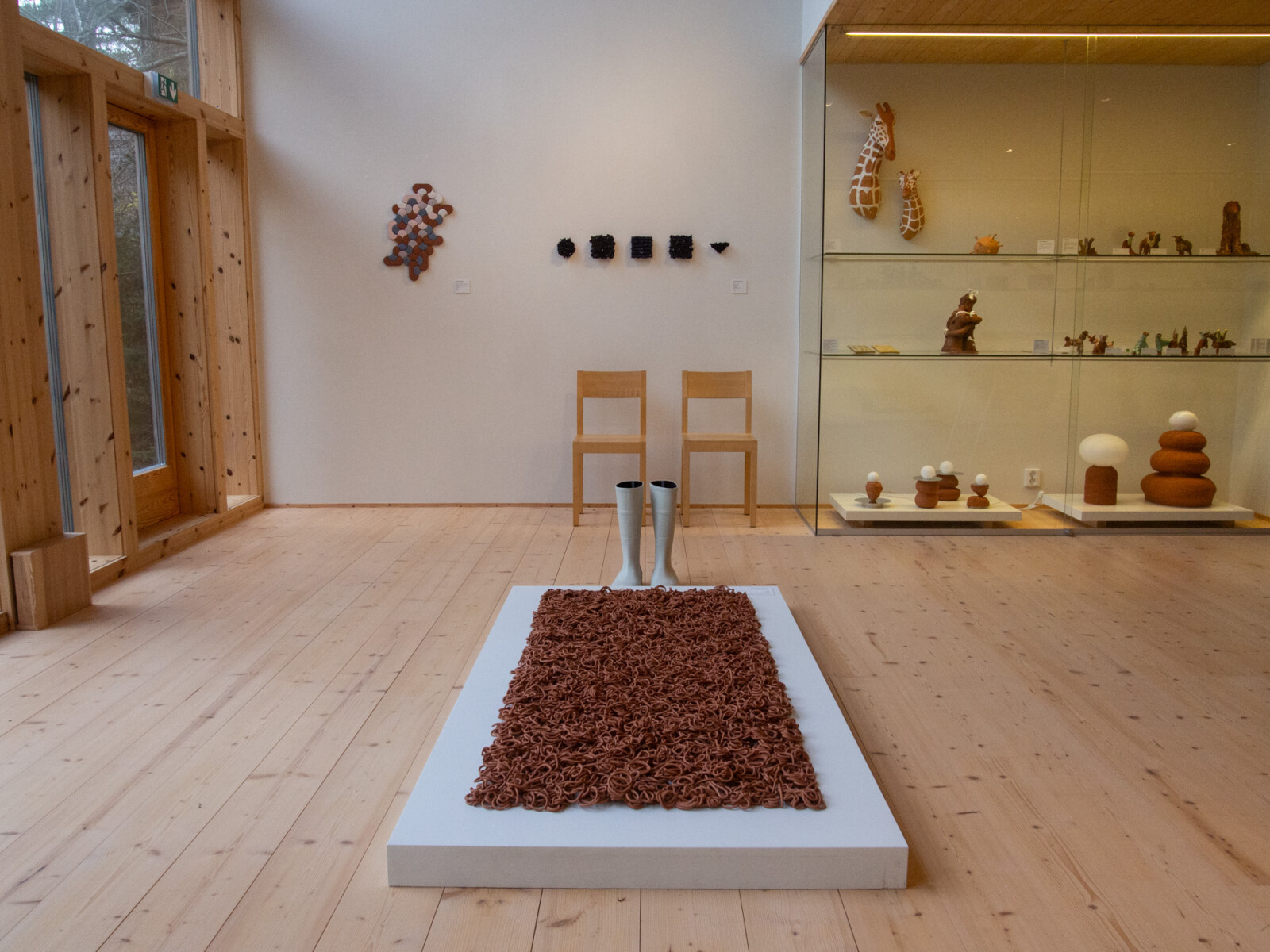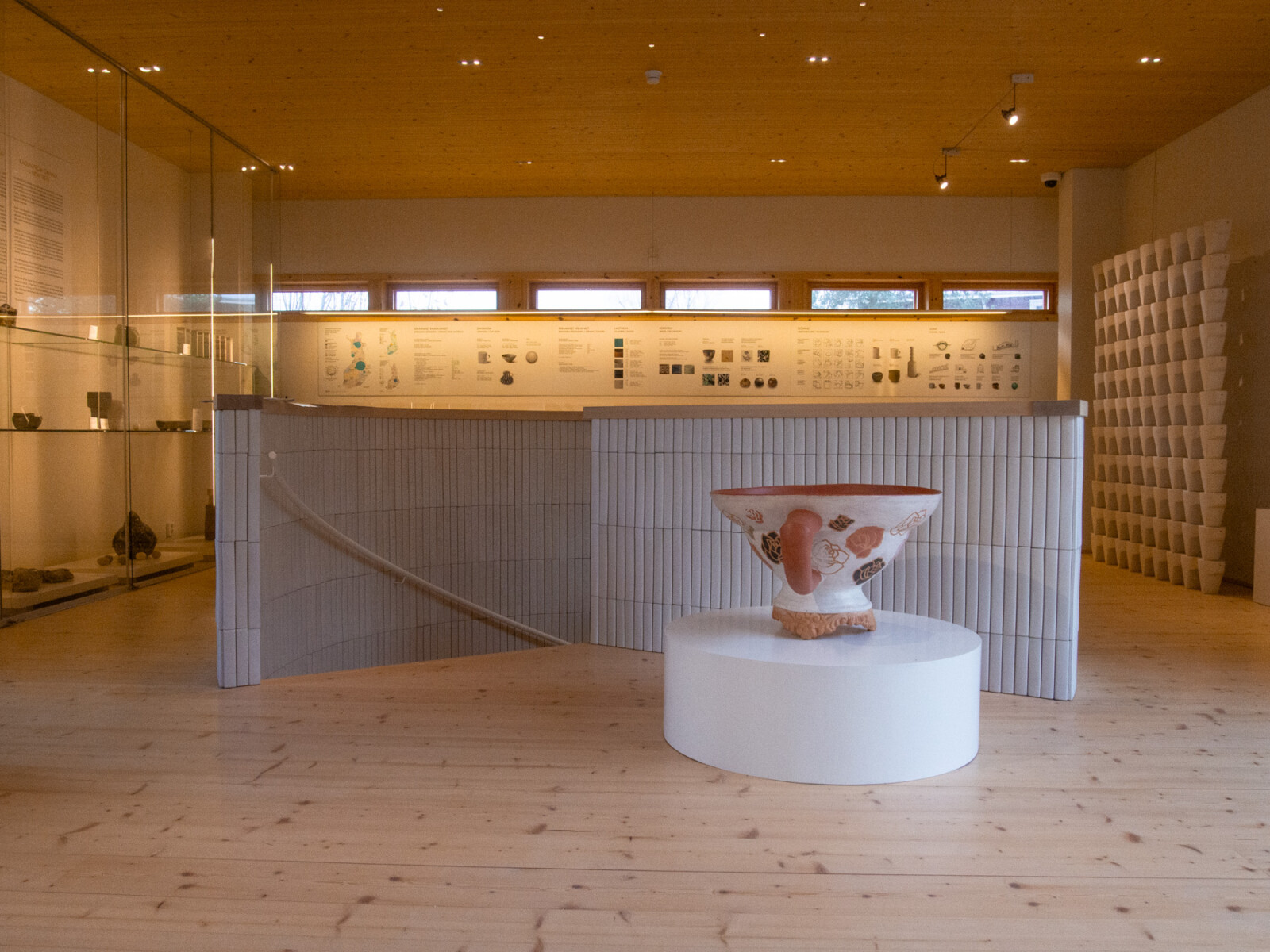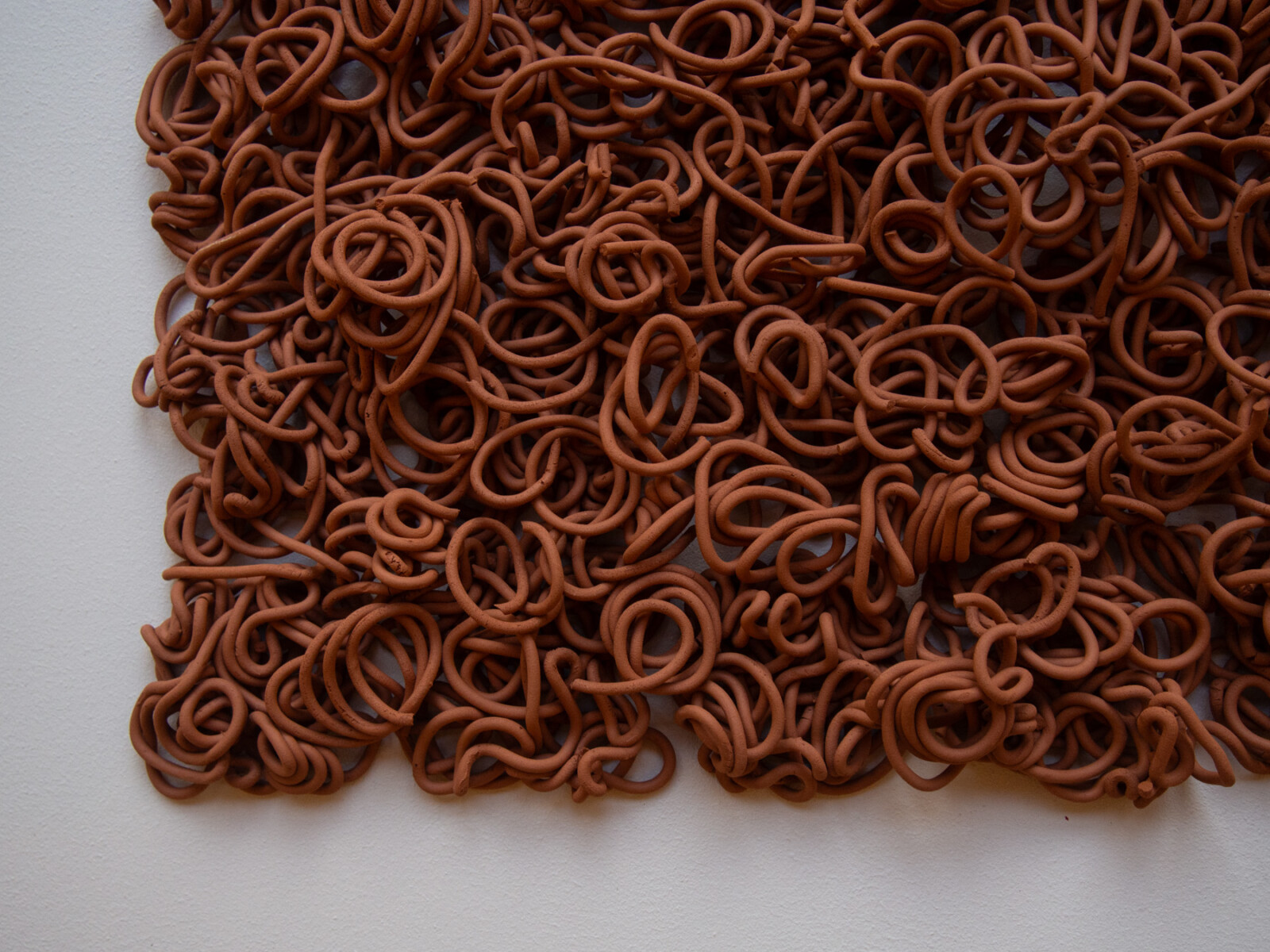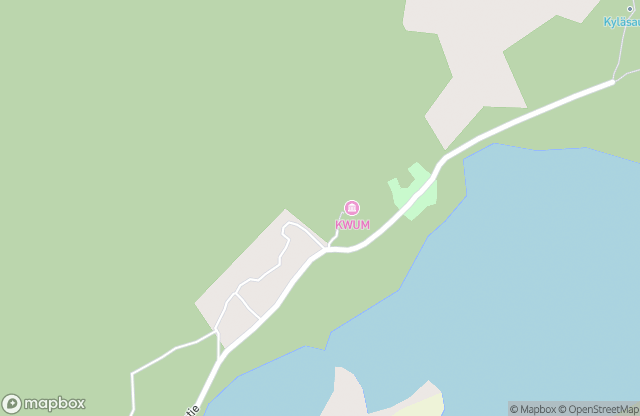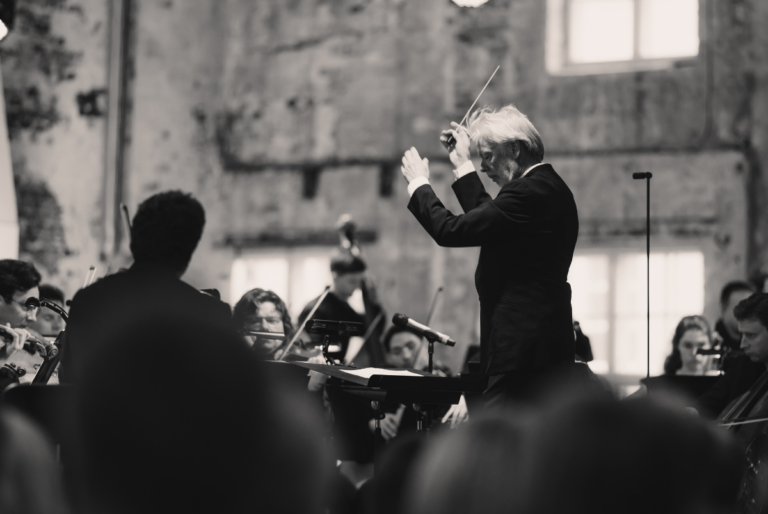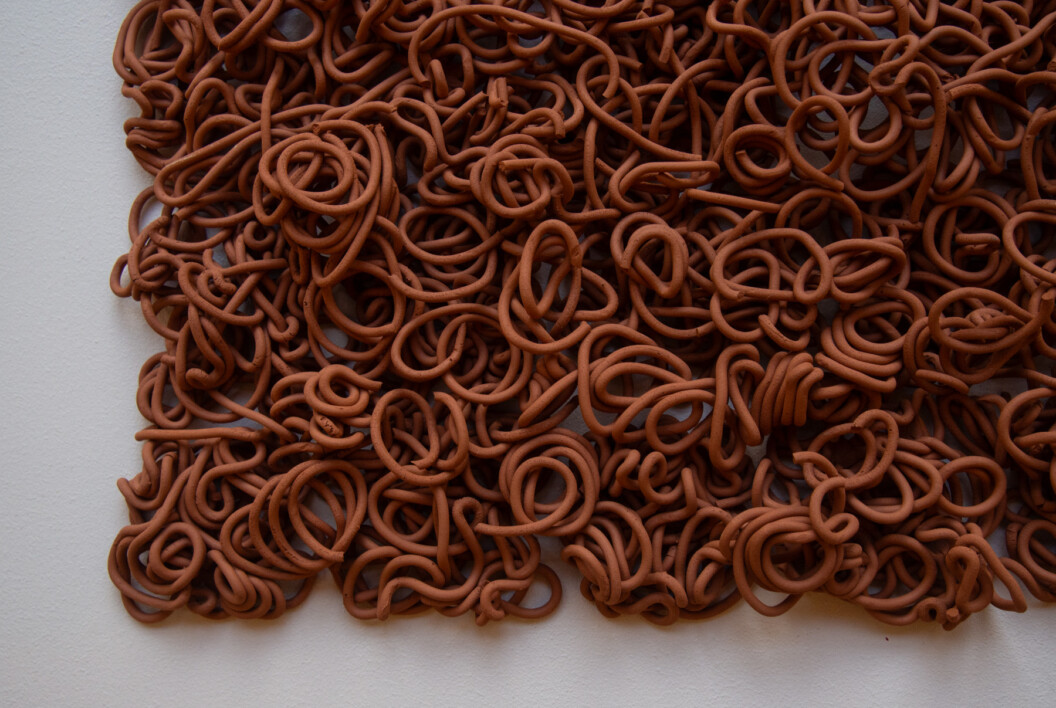
KWUM CERAMIC MUSEUM winter exhibition – Domestic clay
TERRACOTTA DREAMS – CATHARINA KAJANDER
Ceramic artist and Aalto University alumna, Catharina Kajander 1945, has been working with the Finnish earthenware clay as an ecological choise since 1966. With her big coiled works, often decorated with colored clay slips and then burnished, she got the State Craft price when it was given the first time, in 1969. She has studied traditional pottery in Finland and Africa, and worked in brick-pipe factories and many international residencies. As active artist in the community her goal has been to improve the recognition for art and craft. www.ckajander.com
DOMESTIC RED CLAY
NATURAL CLAY – RED CLAY – can be found almost everywhere in the soil of our country. In nature, clay is gray in color. In oxidizing firing, the clay turns reddish. It is caused by the abundant iron compounds in our soil. In reduction firing, the clay turns black.
RED CLAY can be found on the shores of lakes and rivers, fields and ditches. Bricks, roof tiles, floor tiles, drainage pipes, functional and decorative ceramics are made from red clay. It is also used as an ecological material for plastering interior and exterior walls.
RED CLAY can be molded by hand using different crafting methods. It can, for example, be drilled, machine molded, pressed into a plaster mold and cast. Due to its fine structure, it is a very plastic clay and when it dries, it is susceptible to cracking. Red clay is used to make engobes for decorating clay objects.
RED CLAY works in high firing as it is. It gives a dark brown glaze. It can be used partly as a glaze raw material forming celadon glazes in reduction firing. It can be mixed with other clay ingredients as a colorant. When polished and smoke-fired, beautiful black art objects are created.
Almost 160 brick factories were established in the 18th and 20th centuries in places where red clay deposits have been rich. The last factories manufacturing bricks and red clay products in Southern Finland were KERA OY 1917 – 1958 and Kupittaan Savi Oy 1921-1969.
Aino Eeronheimo · Anna-Kaisa Haanaho · Eva Spoof · HAMK-oppilaat · Iiri Repo · Ilma ja Tor Berglöf · Jari Vesterinen · Katja Kotikoski · Katriina Nuutinen · Lea Sarasjoki · Leena Mäki-Patola · Maarit Mäkelä · Mari Paikkari · Miia Kallio · Mira Niittymäki · Mirja Niemelä · Nina Ekström · Päivi Keski-Pomppu · Heidi Puumalainen · Piia Jalkanen · Päivi Rintala · Riitta Talonpoika · Sami Rinne · Sanna Rintalaulaja · Sirkka-Liisa Sarasjoki · Sofie Hägerström · Soile Paasonen · Tiia Matikainen · Tuuli Somma · Viivi Varesvuo
KAINUU KAOLIN – NEW TESTS
Kaolin of Kainuu, an artistic project initiated in 2021, aims to raise awareness on how to collect and process Finnish wild clay. The project was conceived by visual artist Katariina Guthwert who wanted to find high-fired wild clay to use it in her art. With the help of the Geological Research Center, a suitable kaolin deposit was found in the town of Puolanka. The first Kaolin festival and ceramic art exhibition were organized in Puolanka the following year.
Kaolin is an essential material for ceramic work. Currently, Finnish kaolin is not used and all kaolin is imported from abroad. For ceramic artists, the yellowish tone of Finnish kaolin, the non-uniformity of the deposit and the color variations are not necessarily considered a flaw, but a desired artistic feature.
Puolanka kaolin is quite non-plastic. It doesn’t contain much fine clay material and it is difficult to shape by hand. That is why many artists have mixed kaolin with more plastic clays. The chemical and mineralogical compositions of Puolanka kaolin vary a lot. They contain 5-70% kaolinite, which is the main mineral of kaolin. They also contain 15-90%, according to the studies of Geological Research Center. The strong color variations are due to the different concentrations of iron and titanium.
Since the beginning of Kaolin of Kainuu project, many artists have gotten their hands on Finnish kaolin. Artists have used it at Kaolin Festival and it’s group exhibitions, in which already more than 40 artists from Finland and abroad have participated.
The theme of the newest kaolin exhibition, presented in KWUM Studio ceramics museum, is New Tests. A ceramist’s work includes experiments, test pieces and studying soil. The artists exhibiting works in this exhibition have challenged themselves to do artistic research and experiment with the material.
The exhibition was curated by Katariina Guthwert.
Artists: Anna-Kaisa Haanaho, Ulla Harju, Leena Hyttinen, Niko Mankinen, Lotta Mattila, Laura Pehkonen, Eva Spoof, Erkki Stenius ja Jari Vesterinen.
